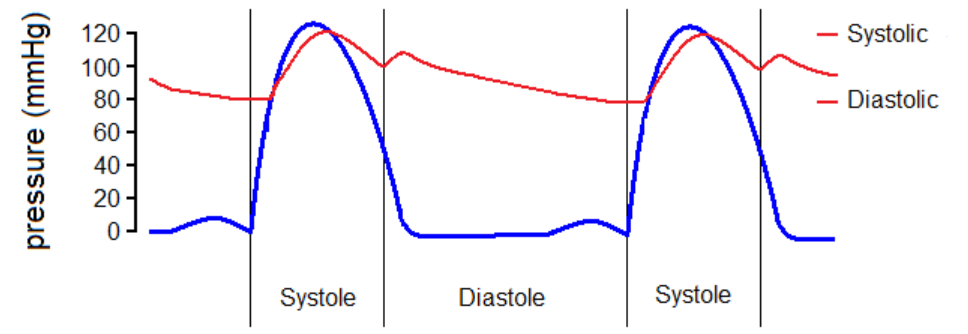Hypertension
A blood pressure (BP) measurement is made up of two values, one being systolic and the other being diastolic. Normal BP is <120 systolic and <80 diastolic. Elevation in BP is categorized into different stages that can be managed accordingly. This article discusses the management of primary or essential hypertension which is not caused by any identifiable disease processes but rather happens on its own.

| Stage | Systolic | Diastolic | Management |
| Normal | <120 | <80 | Annual follow up |
| Elevated BP | <130 | <80 |
Lifestyle changes
Follow up every 6 months |
| Stage 1 | <140 | <90 |
Lifestyle changes as above Medical treatment if there are other risk factors
Follow up after 1 month
|
| Stage 2 | >140 | >90 |
Lifestyle changes as above Two medications
Follow up after 1 month
|
| Hypertensive urgency | >180 | >120 |
No end-organ damage IV antihypertensives and then oral |
| Hypertensive emergency | >180 | >120 |
End organ damage present
Start on IV antihypertensives
|
Pharmacology
There are many different classes of antihypertensives and what determines which one you should use depends on the patients' other comorbidities. Another important factor with antihypertensives is to titrate the dose effectively to avoid hypotension:
| Comorbidities | Medications | Examples |
|
CHF CAD |
Beta-blocker ACEi/ARB |
Metoprolol Carvedilol Nebivolol |
| Stroke |
ACE + thiazide diurethic |
|
| CKD |
ACEi/ARB (except in stage 4) Hydralazine (Stage 5) |
|
|
Diabetes |
ACEi | |
|
No other comorbidity |
Hydrochlorothiazide Calcium channel blocker ACEi |
Medication uses and side effects by class
- Calcium channels
- Uses
- Angina
- Dihydropyridines
- Peripheral edema
- Non-dihydropyridines
- Verapamil
- Diltiazem
- Uses
- AFib for rate control
- Uses
- ACEi/ARB
- Creatinine elevation >20%
- Cough and angioedema (ACEi only)
- Hyperkalemia
- Thiazide
- Uses
- Kidney stones by reducing urinary calcium
- Decreased potassium
- Uses
- Beta-blockers
- Decreased heart rate
- Aldosterone antagonists
- Uses
- Resistant hypertenison
- CHF class 3
- Hyperkalemia
- Gynecomastia
- Uses
- Dilaters
- Arterial
- Uses
- Stage 5 CKD
- Hydralazine
- Reflex tachycardia
- Drug-induced lupus
- Uses
- Venous
- Nitrate
- Uses
- Angina
- Don't use with other nitrates
- Don't use with PDE-i
- Uses
- Nitrate
- Arterial
- Alpha-antagonists
- Generally used for BPH
- Can lead to orthostatic hypotension
- Central acting meds
- Clonidine
- Rebound hypertension
- Can use the transdermal patch to avoid hypertension issues
- Clonidine
All information provided on this website is for educational purposes and does not constitute any medical advice. Please speak to you doctor before changing your diet, activity or medications.
